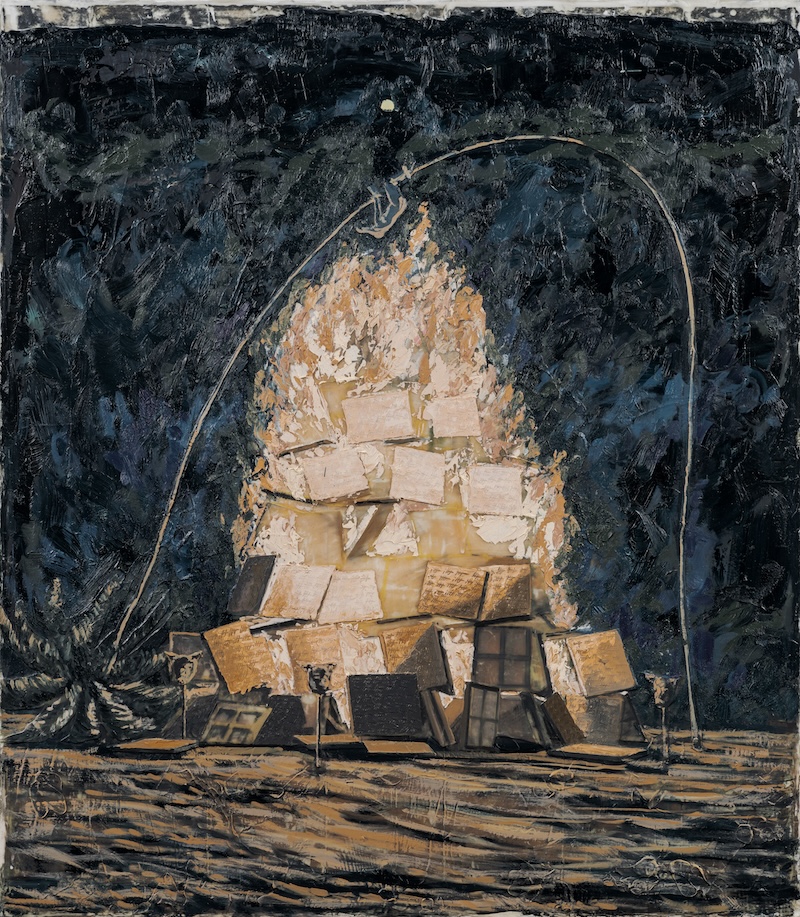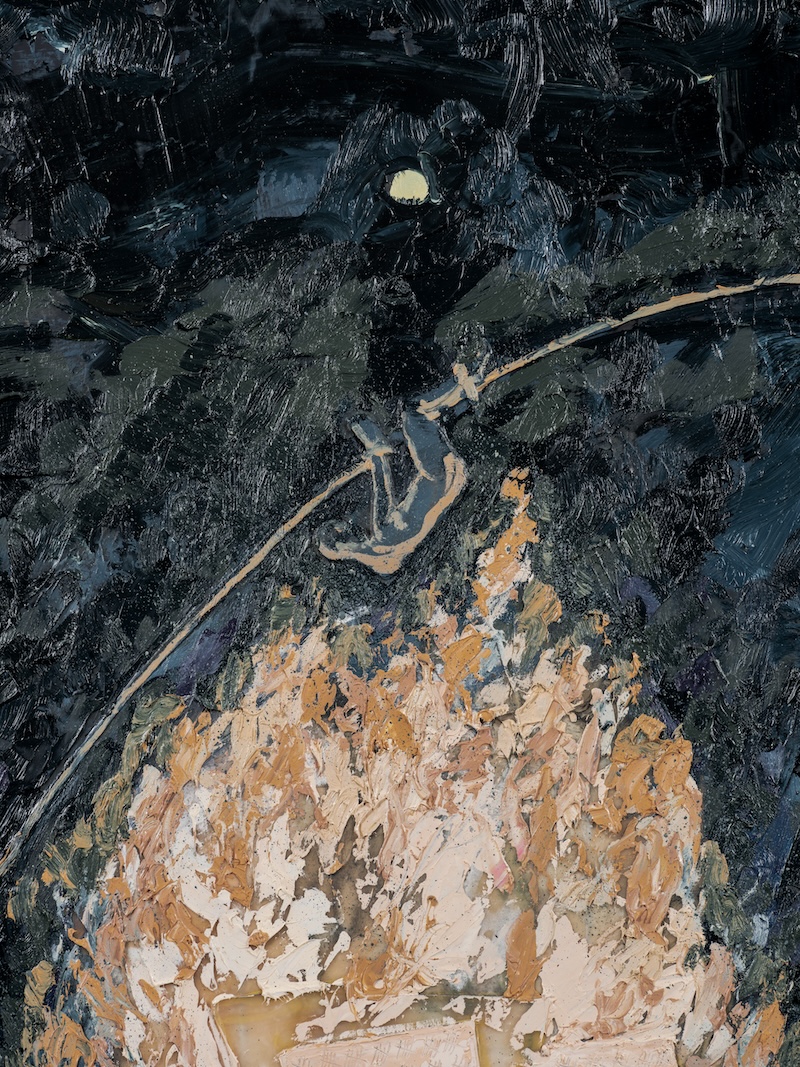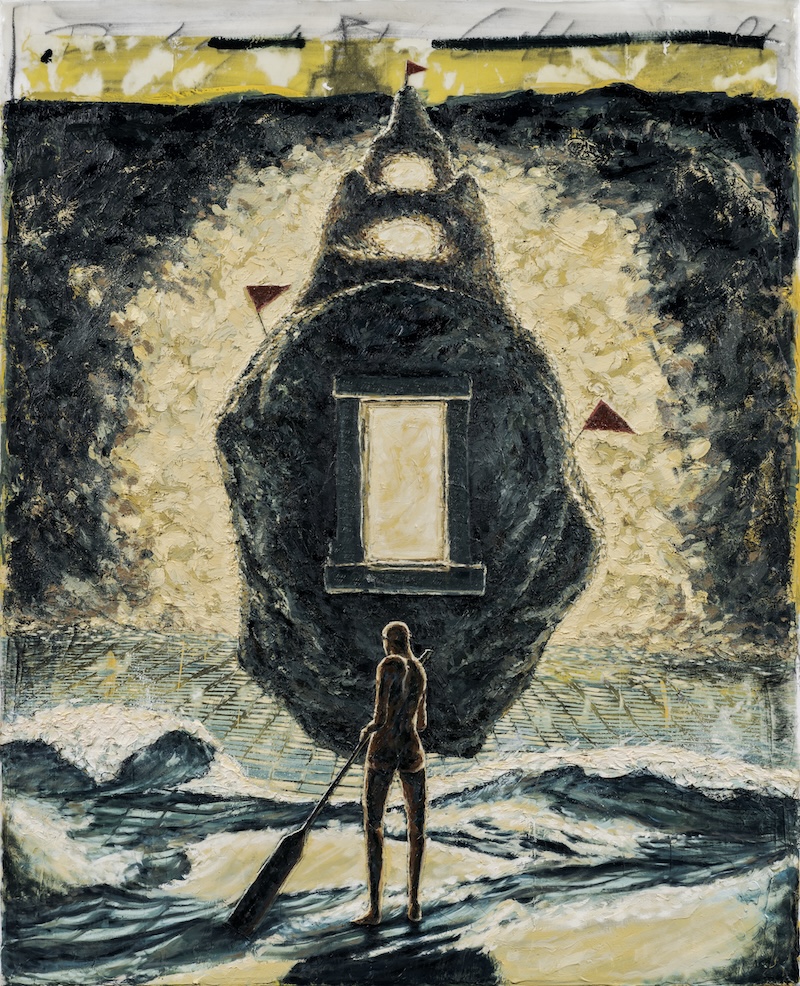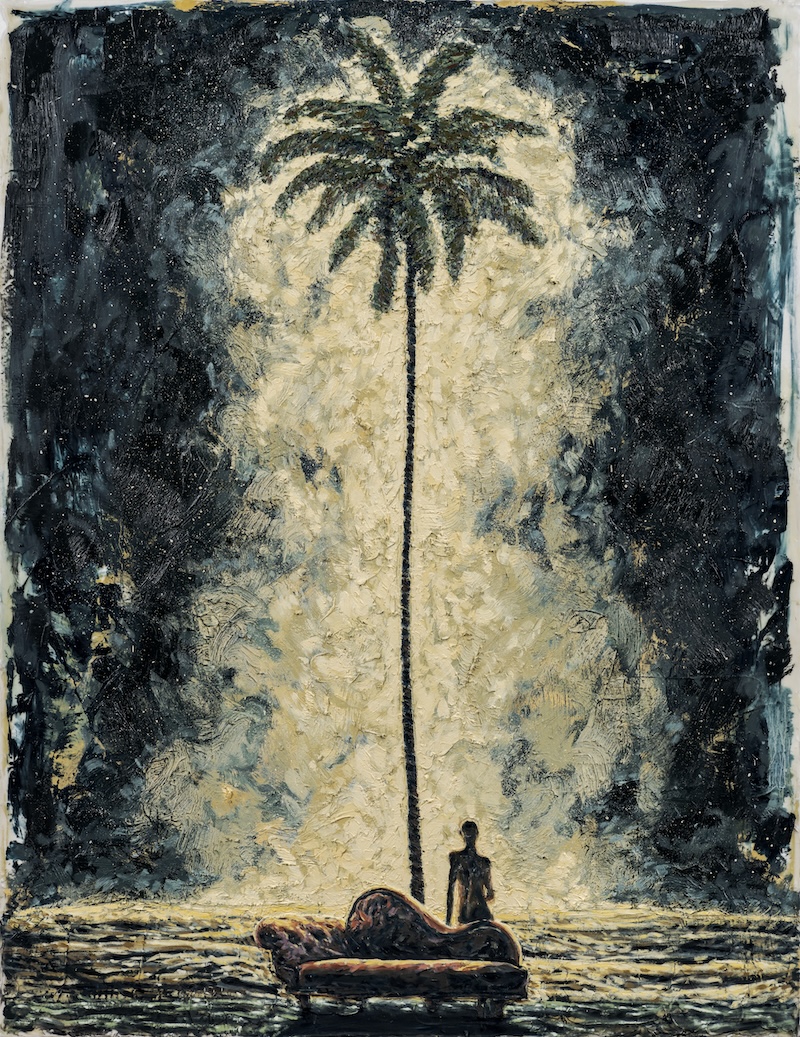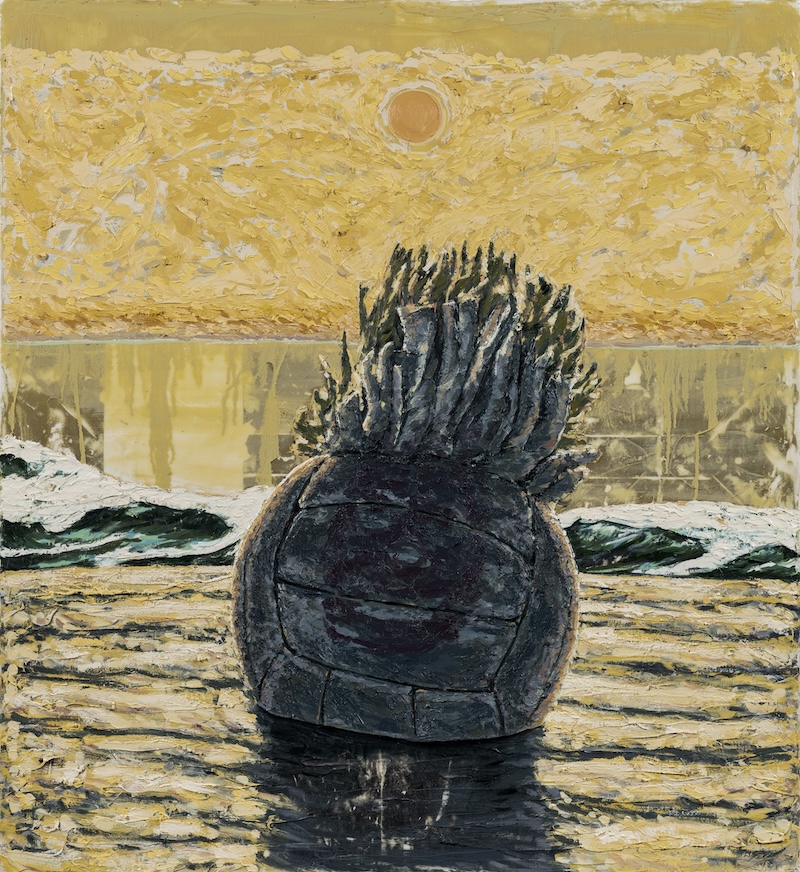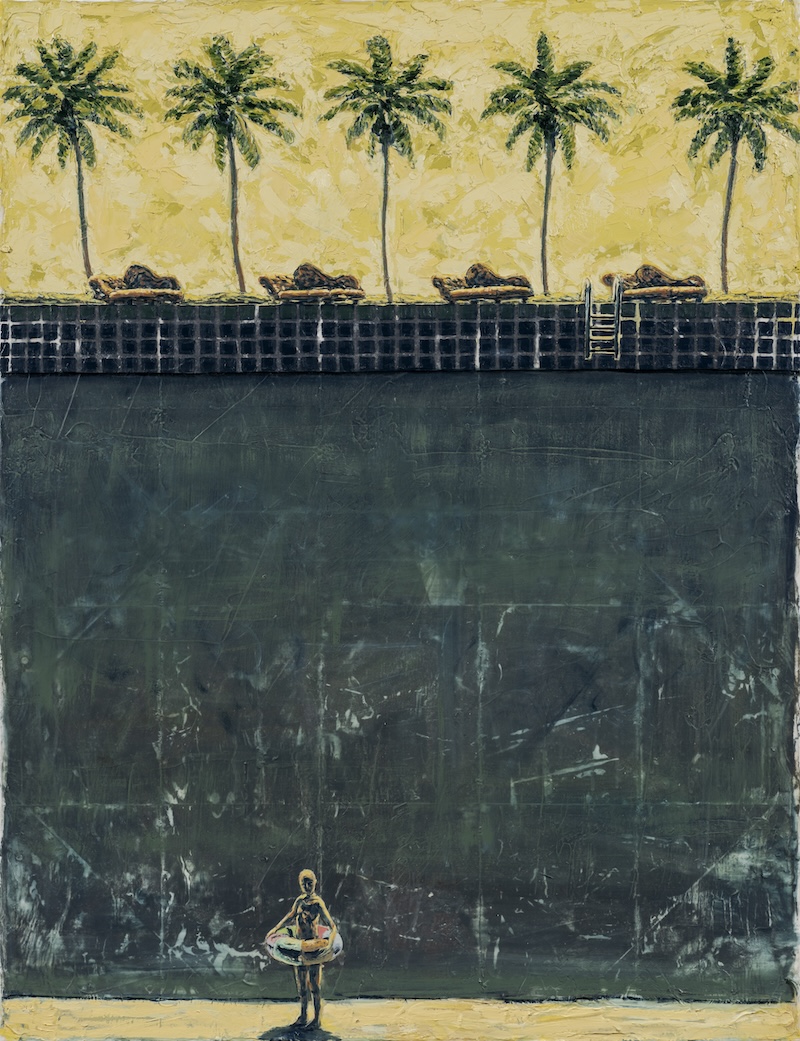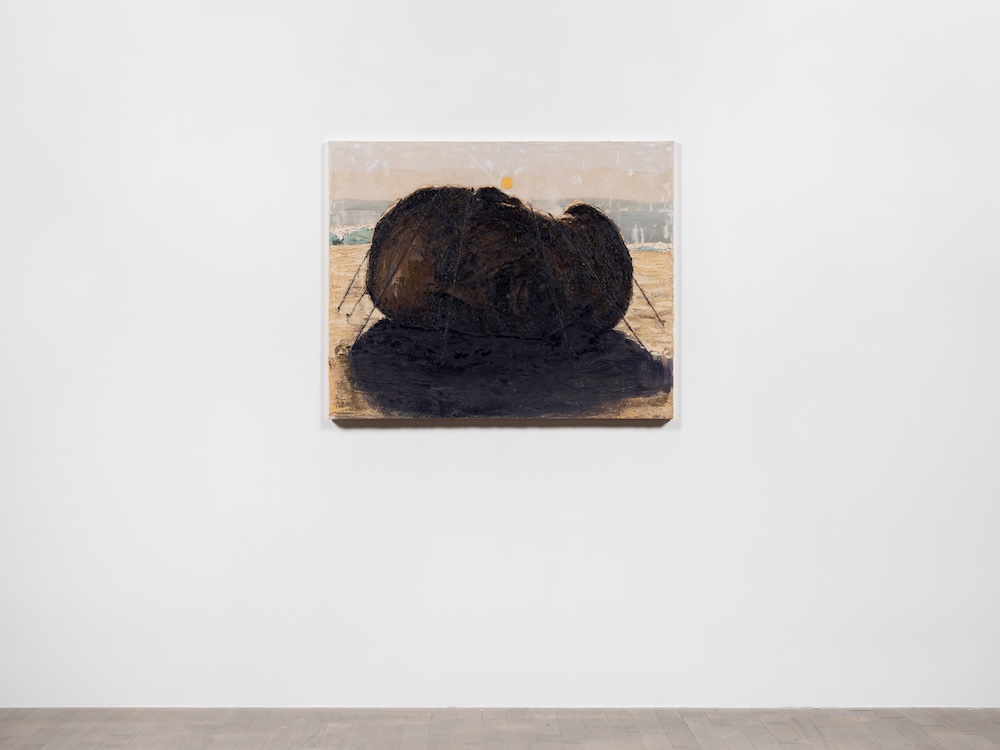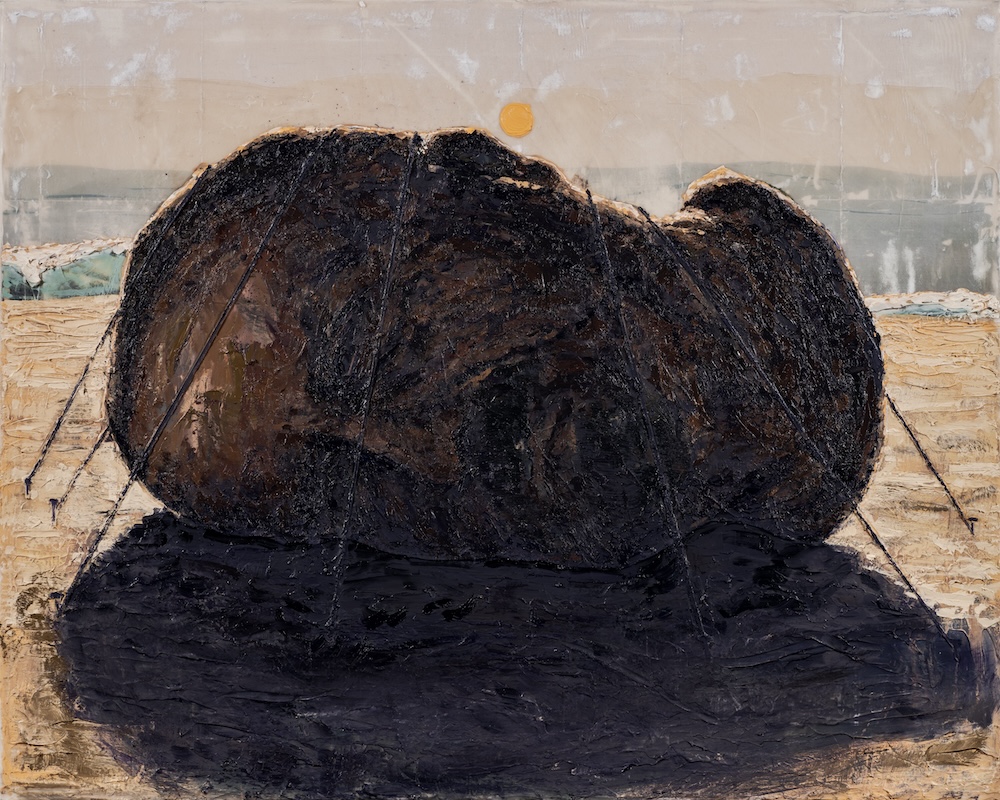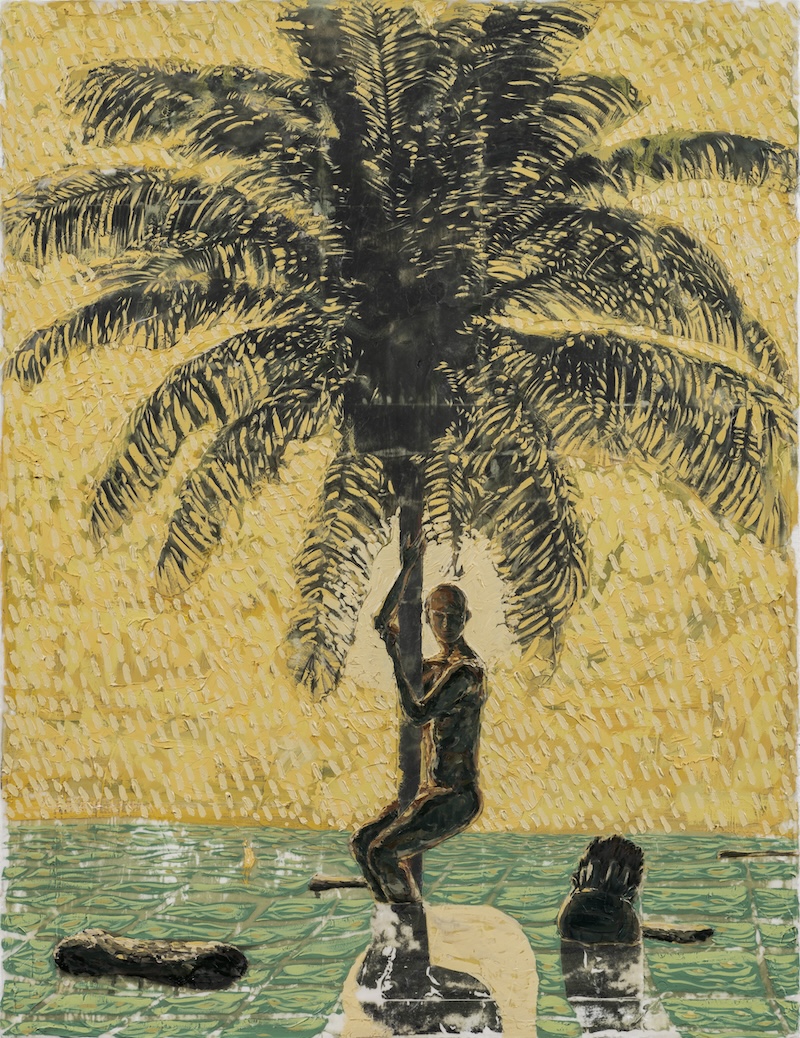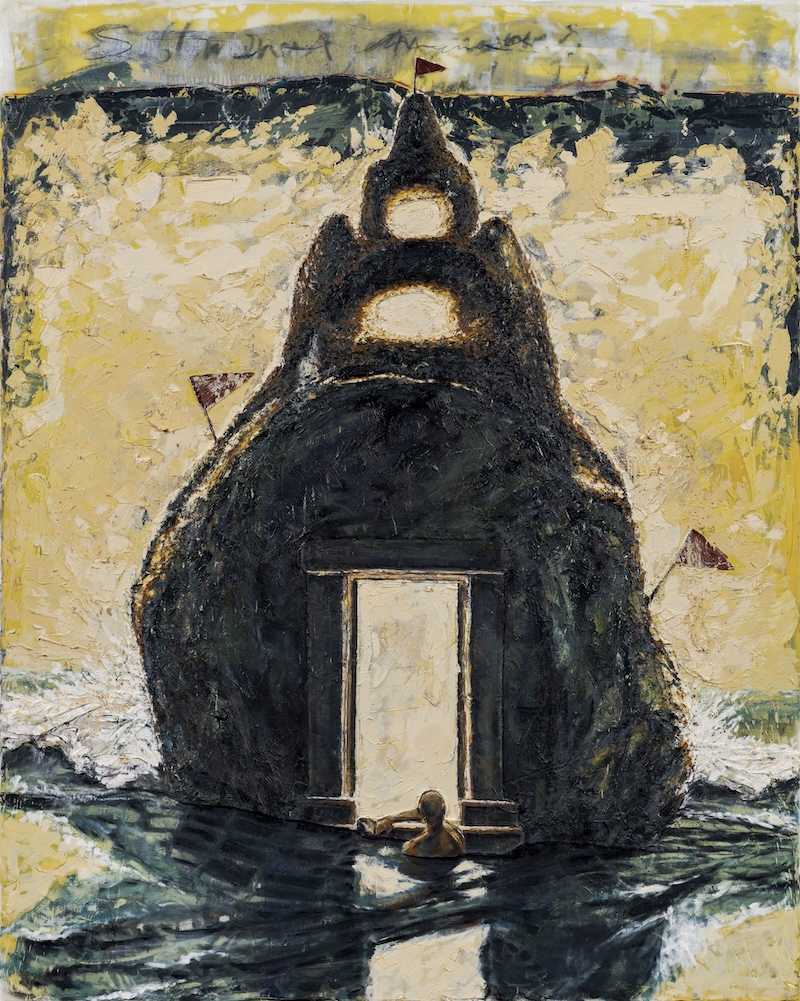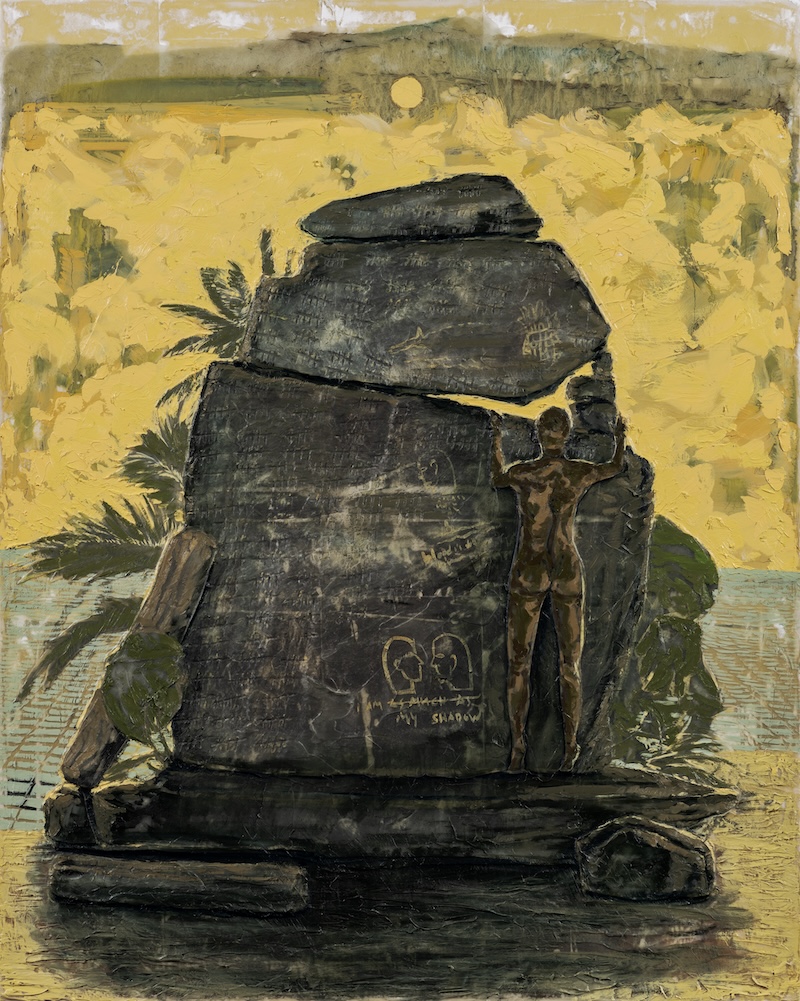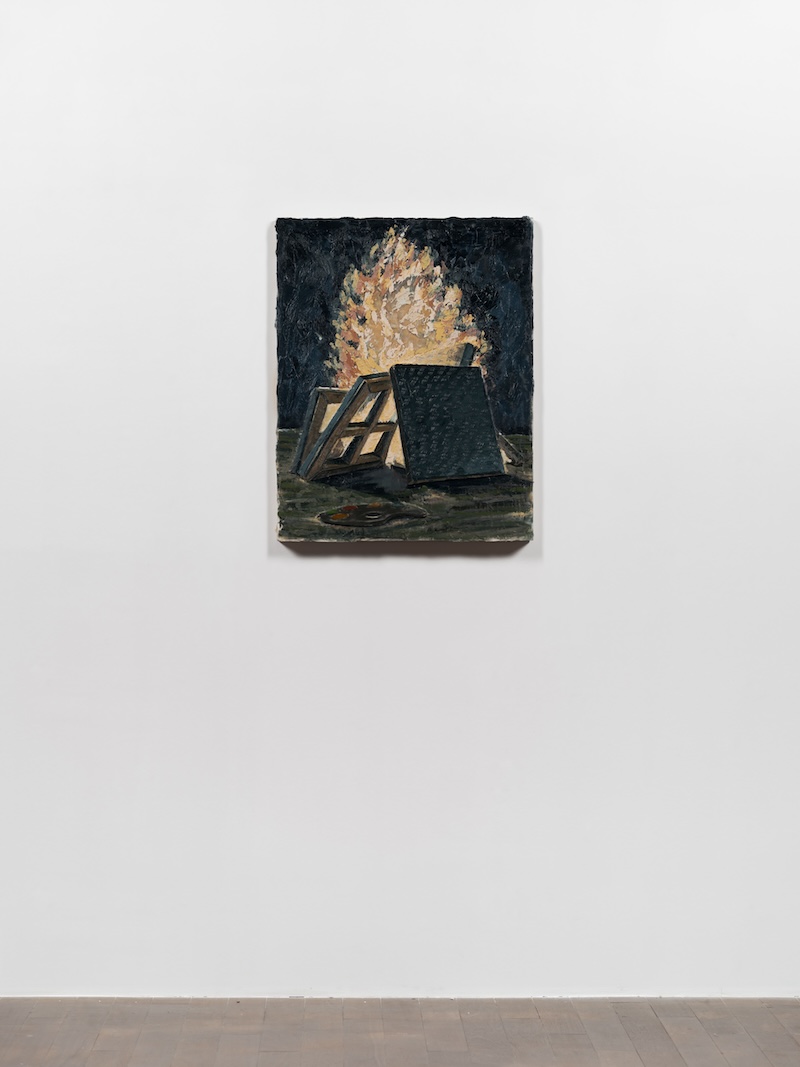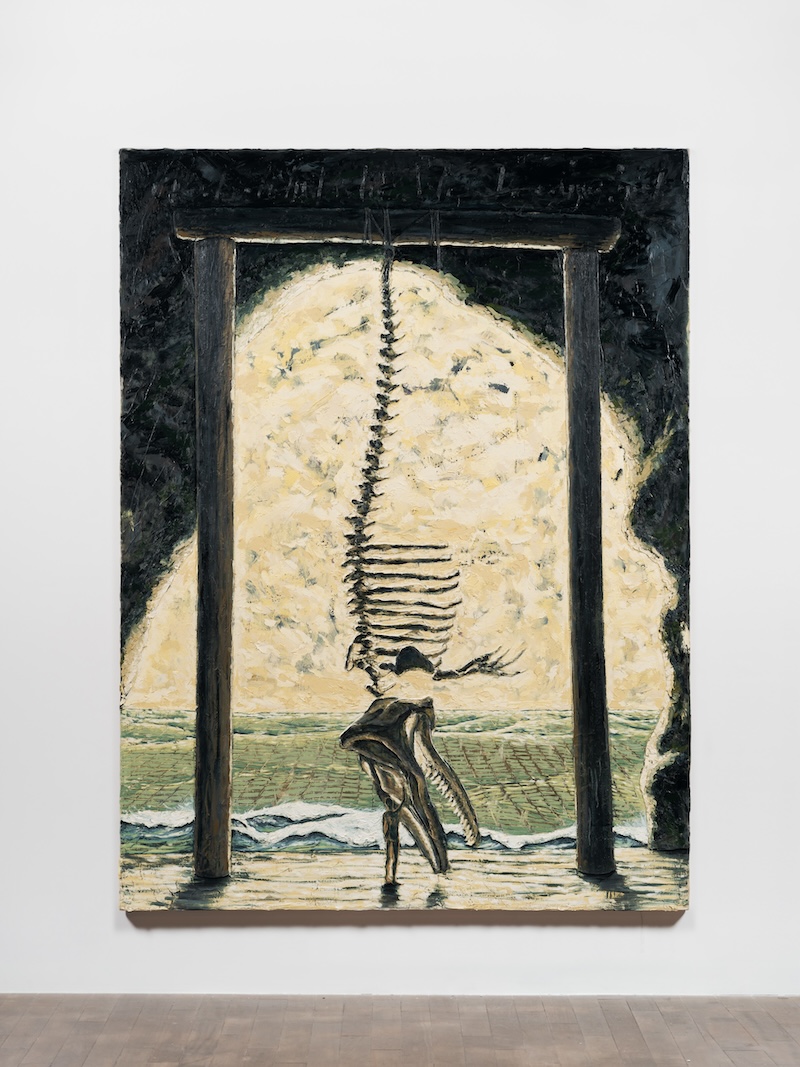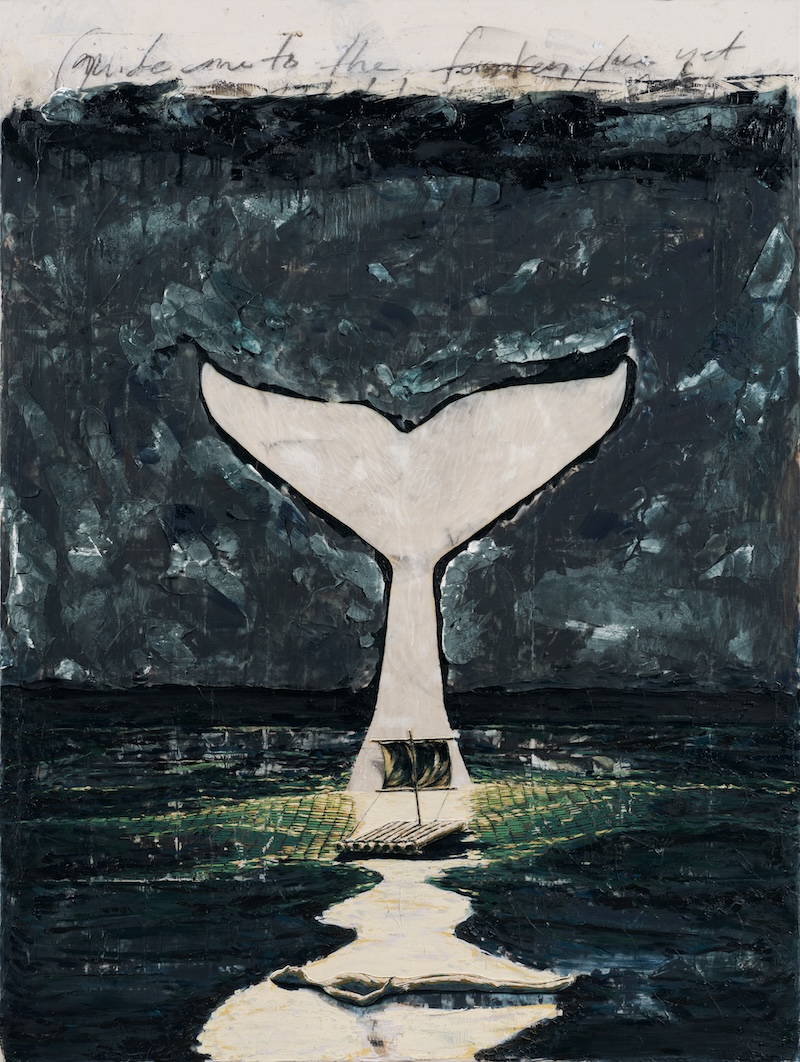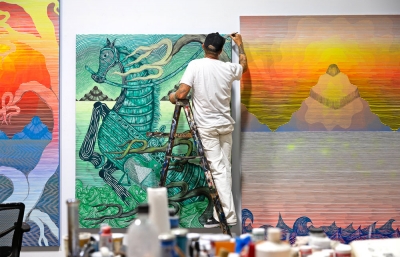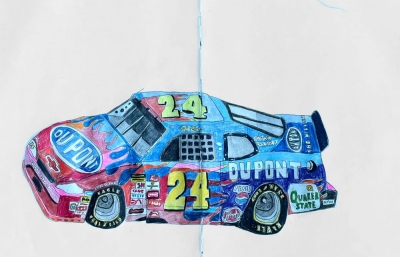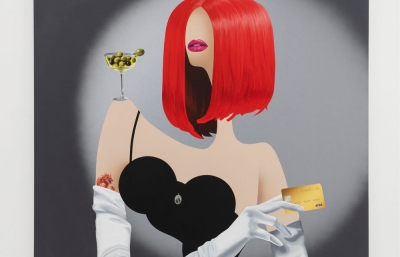On the occasion of the exquisite and deeply personal new body of work, Castaway, created by Ho Jae Kim, we are excited to share some words that Kim wrote about the work. Presented concurrently at Harper's in NYC and now Gana Art in Seoul (the latter opening on August 22nd), the meditative works speak to a conversation about creation in isolation, as Kim notes, "the career of an artist fosters the kind of psychic alienation invoked by an uninhabited island." Please read his words, below. —Evan Pricco

Castaway
The story of Cast Away (2000), directed by Robert Zemeckis, follows Chuck, a man deserted on an island after an airplane crash. Cast Away is beloved for its dramatic depiction of Chuck’s misfortunes, delirium, and methods of survival on the island. When I rewatched the movie as an emerging artist, I felt a peculiar sense of empathy with Chuck’s isolation and experiences on the island. Before my first solo exhibition with Harper’s in New York, my dream of being a full-time painter felt like an impossible dream. I was truly alone with my paintings in my studio–my own deserted island. I longed for someone to visit my studio and acknowledge that my paintings and I exist.
Cast Away became a visual metaphor for my nuanced experience in the studio, one which other working artists might also relate to. In my new body of work, Castaway, I use the film’s environment, props, and themes as a point of departure. Castaway includes 27 new paintings, building a tropical world to interrogate themes of solitude and the artist’s psyche. This new series is a pastiche of motifs from various tales of islands and grand voyages, such as Lord of the Flies, Gulliver’s Travels, and Moby Dick, and images drawn from Christianity.
In Cast Away, Chuck creates Wilson, a personified volleyball, who serves as a friend and confidant on the island. Wilson becomes Chuck’s refuge from loneliness with whom he shares his accomplishments, despair, love, and ambition. Mythical Island (2024) depicts Chuck holding Wilson in a pose reminiscent of Hamlet’s soliloquy, “To be, or not to be.” Wilson's bloody red face, inspired by the Shroud of Turin, drips to the sand below. Like a reliquary object, imbued with the life and body of Christ, Wilson is brought to life by Chuck’s bloodied handprint.
Wilson becomes the physical manifestation of Chuck’s psyche and an extension of the man’s blood and body. Chuck’s exchanges with Wilson blur the boundaries between internal dialogues and external conversations. In the artists’ exile, they create Wilsons, or artworks, physical manifestations of the artists’ history, philosophy, desires, and experiences. Similar to the dualistic nature of Chuck’s conversations with Wilson, the art-making process is both an external exercise and an internal struggle.
Studio Island (2024) references Chuck’s attempted suicide. In Cast Away, this existential scene conveys true despair when all hope seems lost. Chuck survives his suicidal attempt, which leads to a moment of self-recollection and his decision to attempt his escape from the deserted island. The pursuit of passion and dreams exists between hope and despair. All artists desire to be rescued in some way or form. To some, rescue can come in the form of exhibitions and recognition. To others, breaking one’s plateau or finding one’s true purpose can offer peace. Although we castaways ultimately long for rescue, there is a beautiful nuance that ties us to our deserted islands, or our studio practices. Despite the solitude and hardships intertwined with exile and survival, the studio also provides a space for beauty and purpose. The island is a mythical domain where beauty and anxiety coexist in a perpetual dance.
Purgatory, Representing My Reality
My paintings focus on the ideas of the in-between, the mundane, and the liminal. I call them purgatories. Beyond the religious, there are many purgatories in our contemporary lives when we are neither here nor there but somewhere. Whether it is searching for one’s identity, sitting on a long flight between countries, or walking under endless scaffolds and construction sites in New York, we exist in and around indeterminate states.
I am now fortunate to sustain myself as a painter and make daily connections with my artistic passion. However, I still remember the years when people identified me not as an artist, but as the multiple skins I wore as a restaurant manager, bar director, tutor, and club promoter. For many years, I faced the indeterminacy of striving and longing. Using the theme of purgatory, I can represent the human experience of transience, mundanity, and self-realization in a fantastical way.
In my works, I create imaginary spaces and worlds lit entirely from behind. My viewers are forced to look into the intense light and the silhouetted figures and environments ahead of them. The light and shadow reference Plato’s allegory of the cave, where the cave prisoner’s reality is only composed of shadows, never the real object or light that exists outside of the cave. I extend the imagined space deep into the picture plane and place my viewers in direct view of the monumental objects and light ahead. I hope to provide my audiences with the option to seek the truth that exists beyond the shadows.
Mind Palace (2024) shows a figure standing on turbulent waters, looking ahead into the light. The figure endeavors to stay afloat and look into the light, and the painting’s composition references Caspar David Friedrich’s Wanderer above the Sea of Fog. Mind Palace is an extension of Friedrich’s romanticism, merging man’s inner psychology with the sublime and breathtaking natural world.
Perhaps reality exists beyond human comprehension and we will never be able to fully grasp its true nature. However, there is beauty to this impossibility. Our inability to comprehend everything in the world allows us to continuously search and wonder about the world around us. Humanity’s fear of the unknown may motivate us to simplify the world into bite-sized truths where we can remain complacent, but this is at the cost of denying potential discoveries. If we allow ourselves to be bewildered by the light of the rising sun or the starry cosmos, we become a part of the greater world, full of its mysteries and potential for exploration. —Ho Jae Kim, 2024



